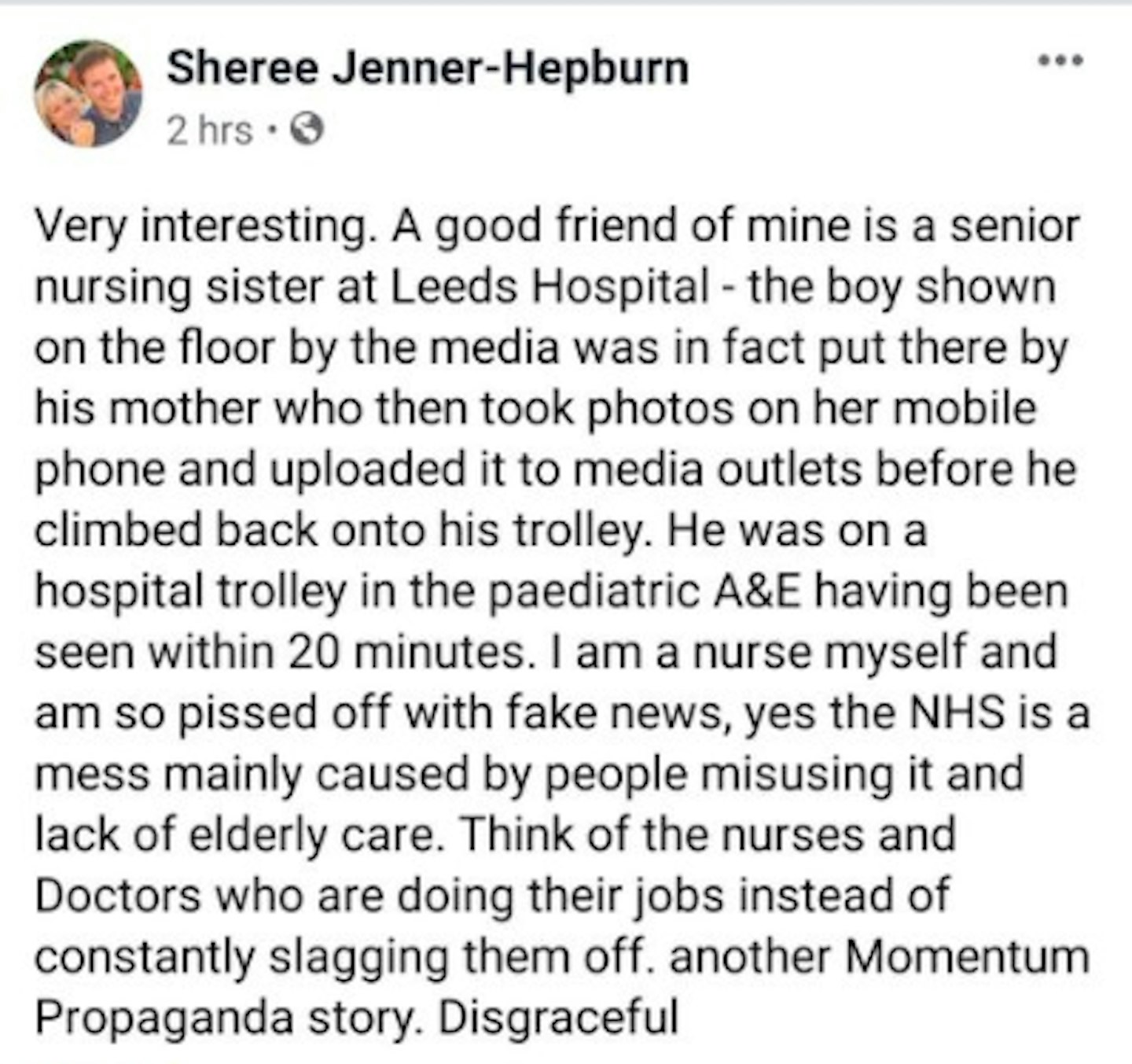The editor of the Yorkshire Evening Post has written a letter to readers explaining how journalists fact-check information after the publication was accused of spreading fake news. The incident has highlighted a worrying trend whereby people seem just as likely to believe a random Facebook post as information from an established news publication.
At the weekend, a picture of a four-year-old boy sleeping on the floor of an NHS hospital in Leeds was published by the YEP. It quickly became a symbol of the general election, used to push political agendas and sway public opinion. But in the haste of social commentary, one Facebook post managed to delegitimise the entire story and lead thousands to believe it was staged – when in fact it was entirely real.
‘The story was first published by the Yorkshire Evening Post after the mother - Sarah - contacted us directly,’ Mitchinson writes in the YEP. ‘Because it is irresponsible - and reckless - to take one person's word and take it as fact, we immediately checked the veracity of the assertion with the hospital. That's not a boast, by the way, just bog-standard journalism.’
Explaining the ‘great lengths’ journalists went to in verifying the story, Mitchinson goes on to explain the difference between information dissemination by news publications and the average person on Facebook.
The story had been completely delegitimised in the eyes of the public due to a Facebook account that purports to be owned by someone called Sheree Jenner-Hepburn. An account seemingly belonging to Jenner-Hepburn posted the picture alleging that it was staged by the mother who ‘sent it onto media outlets and put her son back on a hospital trolley’. This information was according to ‘a good friend of mine’, who Jenner-Hepburn said, ‘is a senior nursing sister at Leeds Hospital.’

The post quickly went viral and in turn, the YEP received thousands of complaints about spreading fake news. But as Mitchinson confirms, the picture was not staged at all. And when the Jenner-Hepburn post was found to be slanderous, she told the BBC she was hacked and didn’t know anyone who worked at the hospital. But the damage was already done, with no one held accountable.
‘You have no way of holding Sheree to account, nor checking her words,’ Mitchinson explains to readers. ‘She's a stranger to you. You don't even know if it is a real person, so why do you trust her claim over the newspaper you've taken for years, in good faith?
‘Sheree - robot or human - did not offer a credible source,’ he continued. ‘The words a “good friend of mine” adds warmth and humanity to the post in order to dupe others into believing her words are credible. They are not, as far as anyone can tell… the words are manufactured very carefully and cynically in order to mislead.’
His explanation has highlighted just how damaging the fake news narrative has been on legitimate news sources. And it’s pretty terrifying.
Once, allegations of fake news were reserved solely for dodgy websites posted on social media but as politicians and interested parties took advantage of the narrative, genuine news sources began to field allegations too. In the US, publications like the New York Times, The Washington Post and CNN have been accused of spreading fake news by Donald Trump.
Just this morning, the Conservatives, Labour and Liberal Democrats were all accused of spreading ‘fake news’ themselves by posting campaign promises in the style of traditional newspapers. Once again, legitimate news sources pay the price of political agendas as the public grows more confused by how to judge legitimacy.
Publications are held to a high standard when it comes to fact-checking – not just out of moral obligation, but legally.
In reality, all publications are held to a high standard when it comes to fact-checking – not just out of moral obligation, but legally. If a publication prints or publishes something untrue, they can be sued for slander. Where some media organisations may have big budgets and in turn be able to field lawsuits should they come – most cannot afford to be tied up in legal battles, nor do they want the reputational damage that comes with it.
The average person on Facebook posting information their friend has told them, sharing videos from unverified sources or creating their own blog is not held to this standard. So, as Mitchinson says, it’s concerning that the public are so quick to believe their Facebook friend over a news source that has much more to lose from publishing unverified claims.
It’s terrifying because it undermines the main purpose of journalism: to hold power to account. The only people that gain when the public lose trust in the media are the powerful; that’s why such people are so inclined to accuse legitimate news publications of fake news - and in turn spread the narrative that 'the media' can't be trusted. So the next time you see an established news organisation being accused of fake news because your friend from spin class has a cousin in the know, think twice about who you can really trust.
Read More:
